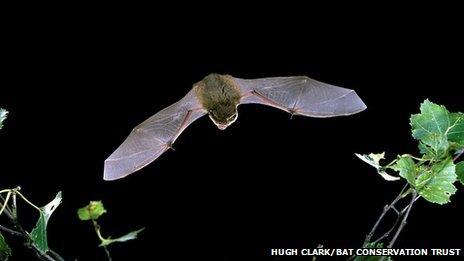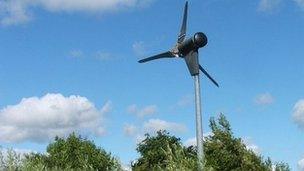Small wind turbines 'halve' bat numbers
- Published

The study focussed on two species of bat, the common and soprano pipistrelle.
A boom in the use of small wind turbines could be halving bat numbers in areas where they are put up, new research has suggested.
The Stirling University study recommended micro turbines should not be sited within 20 metres of the animals' habitats.
Research at 20 such sites across the UK recorded a fall in bat activity of up to 54%.
Micro turbines are installed mainly for domestic and farmland use.
Schemes which pay people for creating green electricity are said to have helped fuel a rise in their popularity.
The Stirling research, funded by the <link> <caption>Leverhulme Trust</caption> <url href="http://www.leverhulme.ac.uk/" platform="highweb"/> </link> , involved halting micro turbine movement at the 20 sites and examining the effect on the activity of birds and two species of bat, the common and soprano pipistrelle.
While bird activity was not significantly affected, turbines did reduce bat numbers, it concluded.

Incentive schemes have been linked to a rise in the use of micro wind turbines
The university's Kirsty Park, who led the research team, said: "Reducing our carbon footprint is important, but we also need to understand the implications of renewable energy technologies for wildlife conservation.
"Current planning guidance on the siting and installation of new small wind turbines is very limited so our findings will provide valuable information and help create more sensible and useful guidelines."
Dr Park said further research was needed, but said: "Based on our results, we recommend that turbines are sited at least 20 metres away from potentially valuable bat habitat.
"This will help us to maximise the benefits of renewable energy generation whilst minimising potentially adverse effects on wildlife."
The research, said to be the first of its kind, is being published in US science journal PLoS ONE.